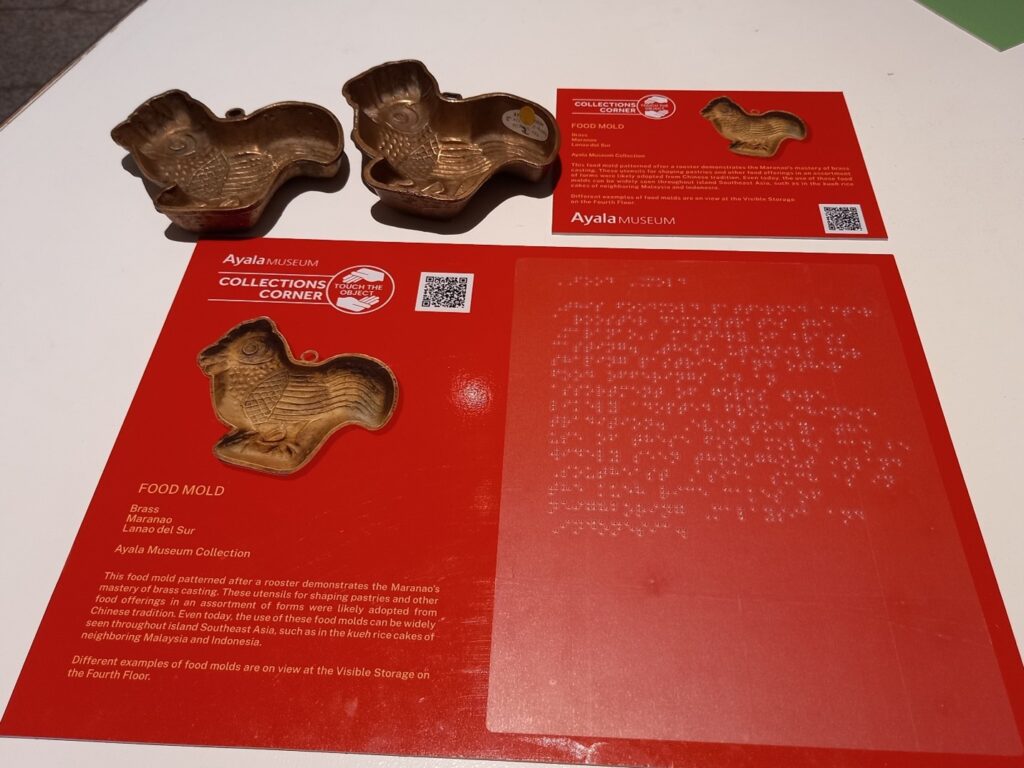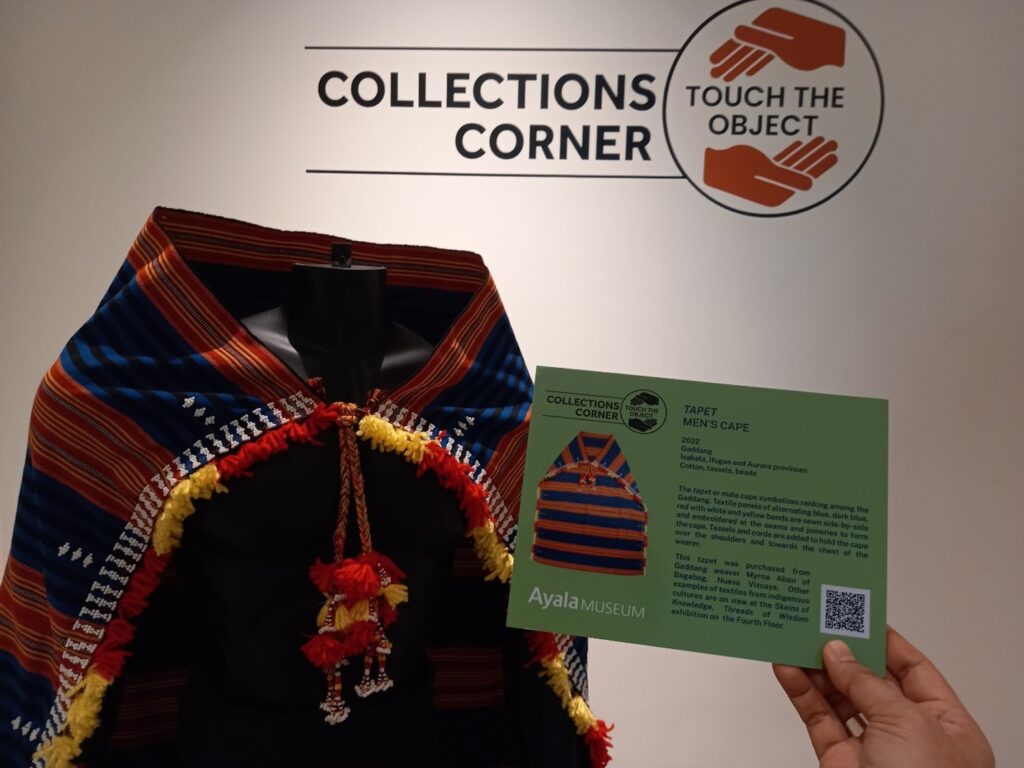“Collections Corner: Touch the Object” Programme Launched at Ayala Museum for IMD 2023
Written by Aprille P. Tijam, Senior Manager, Exhibitions and Collections, Ayala Museum (Philippines, ITP Fellow 2019)
In this time where COVID-19 trauma continues to linger, any tactile activity in the museum is conceived with great considerations for risks involved. Will the guests be interested to participate now in a tactile activity? Will the parents allow their kids to engage?
Keeping this in mind, one of Ayala Museum’s offerings celebrating this year’s International Museum Day theme of museums, sustainability and well-being was the launch of the Collections Corner: Touch the Object program during the IMD event on Saturday 20th May. It was designed as a refreshed approach to connect the audience with objects from the museum collection through up close interaction. The program presented artifacts from the Ayala Museum’s collection like the lotoan (betel nut container) and food molds, as well as new objects representing some of the ethnographic materials in our care, such as the T’boli k’gal (blouse), Gaddang tapet (men’s cape), and tabungaw or kattukong (gourd hat). This was inspired by the Hands-on Desk I experienced at the British Museum in 2019, as a fellow of the International Training Programme.




A crescent-shaped table was upcycled from a past exhibition to host the two lotoans and two food moulds which were all made of brass. Mannequins on each side of the table were positioned wearing the tapet and k’gal. This set- up allowed more than 2,000 guests to interact closely with these objects– touch, feel, smell, if they like, and take photos or selfies. Educational handouts with descriptions were made available for room-use only as a learning tool, with corresponding interpretations in braille format. This is our first attempt to make the information more accessible to visually challenged guests.
I worked with my colleagues Ken Esguerra, Arnold Torrecampo, Joan Gando, Kam Omolida, and Rex Cabugon on the selection and organization of the program, together with the Resources for the Blind in translating the texts to braille format. A QR code was also incorporated on each handout to direct the guests to more objects from the museum’s collection on the Ayala Museum website. The guests were also encouraged to see more examples of similar objects in the Visible Storage, or featured in the Digital Gallery, in the permanent exhibitions, or inside a temporary showcase adjacent to the Touch the Object kiosk.



During the IMD, I worked with Joy Peña and Grace Jabal from the Audience Development team, together with museum volunteers – Kat Pascua and her daughters Trish and Nat Pascua, Kate Jumawan, and Paulo Piñol. The guests took photos and listened to our explanations of the functionalities, designs, and stories about the objects on display. The enthusiastic responses of the guests, old and young alike, were very heartwarming and encouraging—they tinkered, scrutinized, asked questions, read the handouts, felt the braille—for most of those who were curious and not familiar with braille. And we received commendations for the inclusion of the braille.

The majority of the guests who approached our kiosk were surprised at the concept of the museum now allowing guests to touch the objects. Many were very pleased with being able to wear the kattukong and left enriched with the knowledge that it was made from dried gourd (locally known as upo, in Filipino), with bamboo weave as lining inside. Most of them initially perceived that the hat was made of wood.
A guest, who turned out to be a biologist, visited twice and shared that he was most intrigued by the variety of the huge upo, which allowed the skilled kattukong makers in San Nicolas, Ilocos Norte to continue with this hat-making tradition. He could not resist immediately researching online to find out that the tabungaw was from the Lageneria siceraria family, then discussing the concept of birds and other animals feeding from the upo, enabling the propagation of seeds to grow more of this kind—touching on how resources are sustained to support the continued tradition of gourd hat-making.


Additionally, many were in awe of the design of the lotoan and identified with the pagnganga (chewing) tradition of betel quid, citing that some of them vividly recalled their grandmothers practicing this tradition when they were younger. Several guests had no idea at all what a betel nut was or the betel nut-chewing tradition.


The conversations generated from 10am to 6pm were very interesting, inspiring us with more ideas on how to improve the Collections Corner: Touch the Object program. After the IMD, this will be permanently offered at the fourth-floor lobby as gateway to the Visible Storage. It is hoped that more objects with handouts and braille translations will be prepared in the next six months to continue facilitating a more welcoming engagement, advocate inclusivity, and allow access to these objects which would normally be seen only through showcases in the exhibitions or online platforms.
